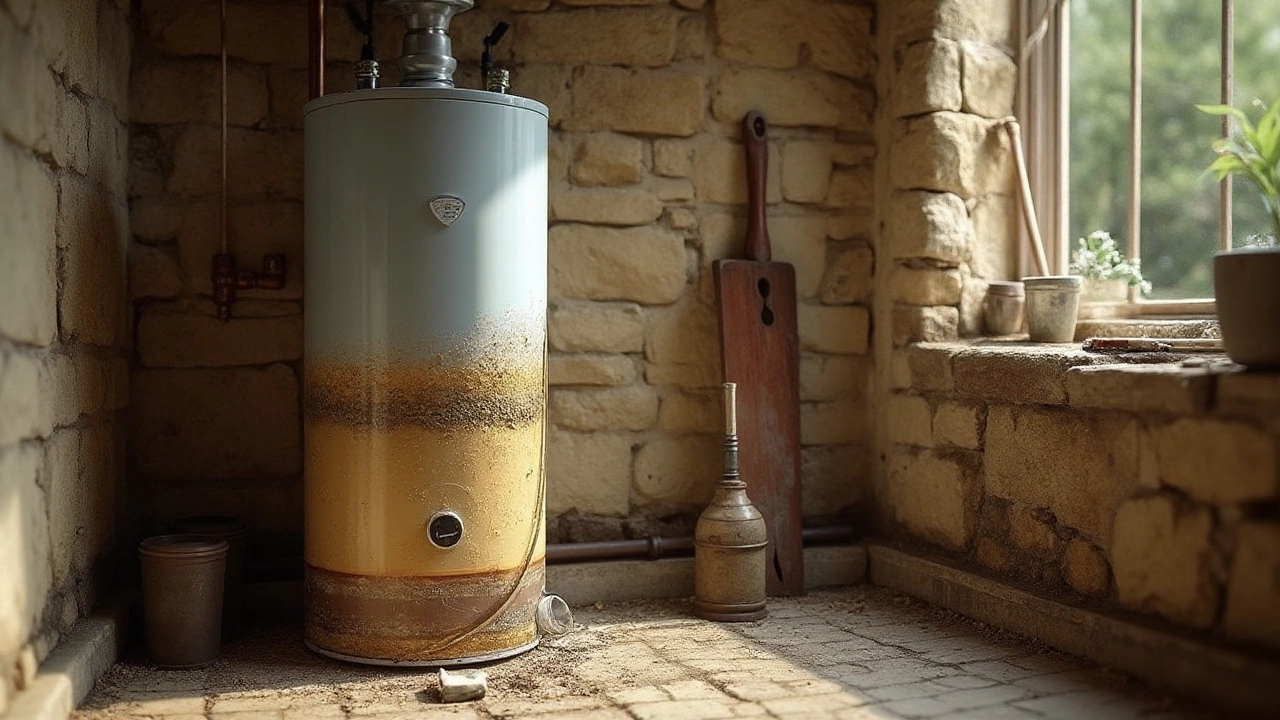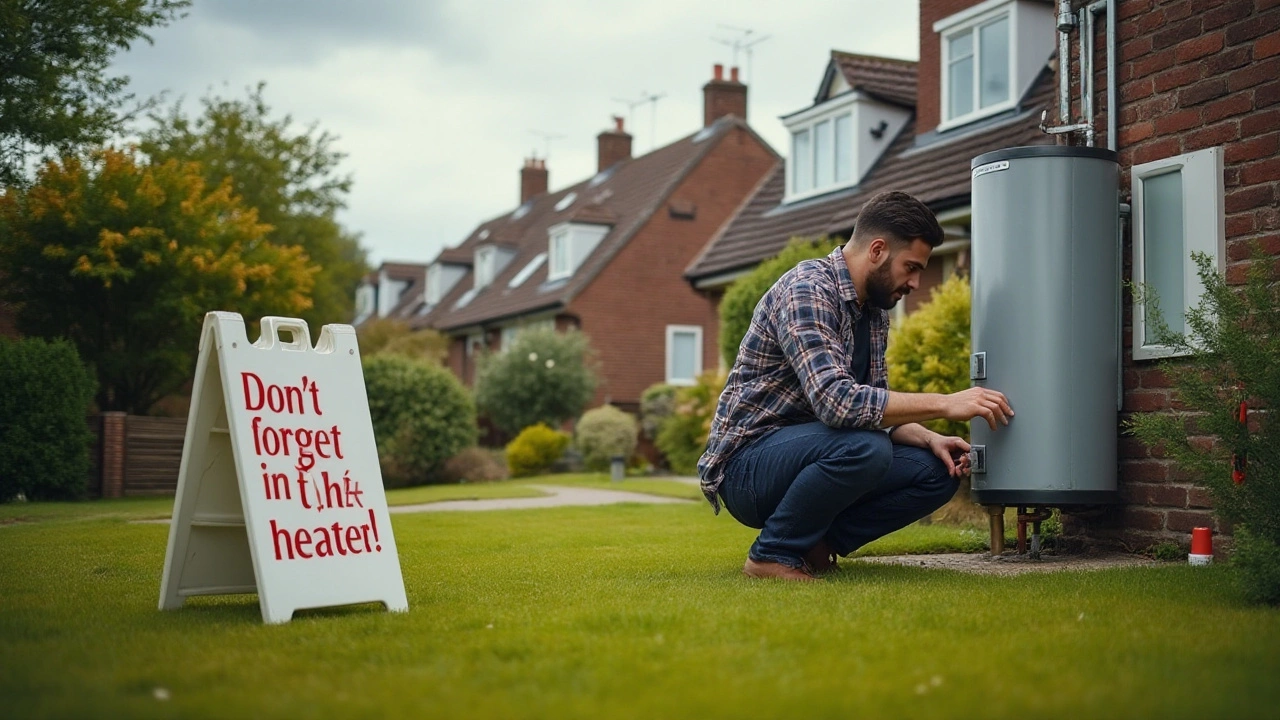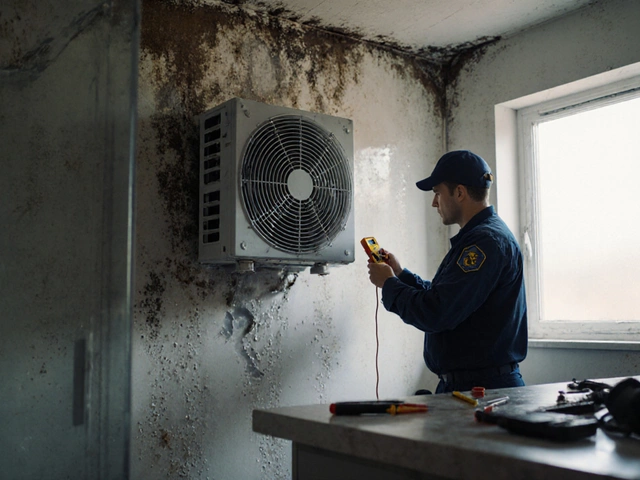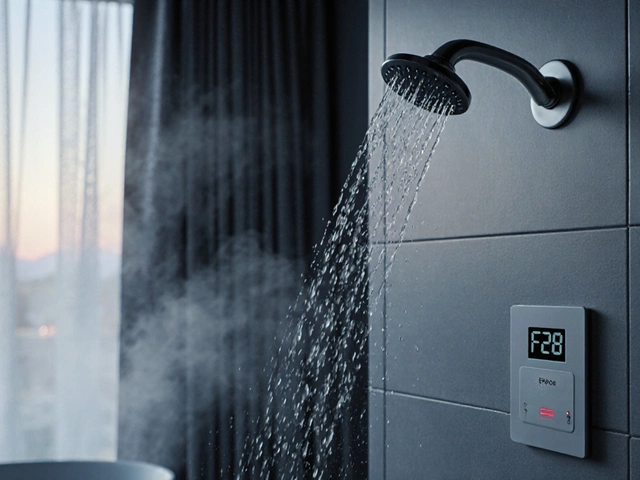Think of your water heater as the unsung hero of your home, quietly toiling away to provide comfort with each steaming shower and clean dish. But like any hard-working device, it needs a bit of care to keep performing well. One often overlooked task in this maintenance routine is flushing the water heater. You might wonder what happens if you skip this step altogether. Well, let’s just say it’s not exactly like procrastinating on laundry. The consequences can be more serious, slowly turning into a costly oversight.
Regularly flushing your water heater clears out mineral buildup, which could otherwise wreak havoc if left unchecked. Over time, sediment collects at the bottom of the tank, taking a toll on efficiency and potentially leading to more troublesome issues. But how can one know if it’s time to roll up those sleeves and clean things out? More to the point, what happens if you just leave it be?
- The Role of Sediment in Water Heaters
- Signs Your Water Heater Needs Flushing
- Potential Consequences of Neglect
- How to Properly Flush Your Water Heater
- Maintaining a Healthy Water Heater System
The Role of Sediment in Water Heaters
Sediment might sound harmless, but in the world of water heaters, it’s more like a silent saboteur. You see, water naturally carries a bounty of minerals like calcium and magnesium, especially in areas known for 'hard water.' When water heats and cools inside your tank, these minerals begin to settle at the bottom. This may seem like a trivial occurrence, but picture sediment as tiny insulators clinging to your tank, trapping heat where it’s least needed and forcing your water heater to work overtime. Without any regular maintenance, that little coat of minerals can cause your system to become grossly inefficient, making it guzzle more energy than it should to keep your showers warm.
It’s also worth mentioning that too much sediment doesn’t just affect performance; it can lead to more serious safety issues. An abundance of sediment can overheat the bottom of the tank, causing metal fatigue and potential ruptures. There’s a documented case by the Plumbing Manufacturers’ International noting that ruptured water heaters actually make the cut on their list of common insurance claims. The buildup can also curtail the available hot water in the tank. It’s not a pleasant surprise to run out of hot water halfway through your shower, especially during winter!
Another unanticipated side effect of sediment is the rumbling noise from your water heater. As the burner heats the water, trapped moisture in the sediment can boil, leading to noisy pops and bangs reminiscent of an old steam train. If you’re noticing these sounds, it’s not so much a Dr. Doolittle moment with your heater trying to communicate, but it is sending you signals—loud ones—that it’s time for some maintenance. Regular flushing can mitigate these problems, keeping your system running smoothly and quietly. Water heater maintenance is often overlooked but vital to a healthy home.
According to the Department of Energy, ‘A water heater that heats up usually uses more energy, increasing your utility bills unnecessarily.’
Imagine your water heater as an athlete with weights tied around its ankles. It can keep running, sure, but not at its best speed or with the endurance it naturally has. Sediment acts just like those weights, reducing efficiency and shortening the lifespan of your appliance. With routine checks and proper maintenance, you can ensure that those tiny troublemakers don’t snowball into larger problems. So next time you think about skipping that yearly flush, consider the cost and effort of repairs versus a simple maintenance task.
Signs Your Water Heater Needs Flushing
Recognizing the signs that your water heater is in need of a good flush can save you from headaches down the line. One of the most common indicators is a noticeable decrease in hot water supply. If your showers are getting cold faster than they used to, sediment buildup might be the cause. The sediment, mostly composed of minerals like calcium and magnesium, settles at the bottom of the tank, reducing the available space for hot water.
Another telltale sign is strange noises coming from the tank. Sediment can often solidify and form a layer that traps water beneath it. When the heating element turns on, the trapped water heats so quickly that it results in popping or banging sounds. It’s a lot like a pot boiling over, and it's an unwelcome surprise when you’re trying to enjoy a bit of morning quiet. A water heater that sounds like it’s auditioning for a percussion band should certainly be on the honey-do list.
Look out for cloudy or rusty water. Over time, dissolved minerals and rust particles can dislodge into the hot water, leading to discoloration. This is particularly noticeable when you fill a bathtub or the sink. Not only does this affect water quality, but it could also stain dishes and laundry. Experts, such as those from the U.S. Department of Energy, note that regular maintenance including water heater flushing can help prevent these issues, extending the life of the appliance.
Energy bills suddenly going up? That’s another classic symptom. A layer of sediment acts like an insulator, forcing the water heater to work harder and use more energy to heat the tank’s water. It’s a bit like wearing a heavy winter jacket in summer; efficiency drops, and costs rise. If your wallet is feeling lighter these days, it might not be due to your Friday night pizza habit, but rather a neglected heater.
Lastly, there’s the issue of varying water temperatures. If your hot water is more temperamental than a two-year-old, sediment might be to blame. The mineral deposits essentially play musical chairs with the heating element, causing inconsistent temperatures. Fixing this issue isn’t just about comfort – consistent hot water is essential for hygiene and cleanliness in the home.
By paying attention to these signs, you can time your maintenance just right. As always, it’s a good idea to consult with a professional plumber if you’re unsure about any noises or changes in your plumbing system. After all, an ounce of prevention is worth a pound of hot water – or something like that.

Potential Consequences of Neglect
Imagine what happens when you ignore something as crucial as water heater maintenance. Over time, neglecting this task isn't just an issue of using slightly more energy. It can result in a range of headaches, both financial and functional. The most immediate consequence of failing to flush your water heater is sediment buildup. When minerals like calcium and magnesium precipitate out of the heated water, they settle at the bottom of the tank. As this layer thickens, it can act as a barrier between the water and the heating element, making your system work harder to heat the water to your desired temperature. This inefficiency translates directly to a spike in your energy bills, as more electricity or gas is required to achieve the same result.
The hidden dangers don’t stop there. Sediment buildup not only clogs your heater but also contributes to less effective heating, where you may find that your showers turn cold sooner than they should. This inconvenience often nudges homeowners to crank the thermostat higher, inadvertently raising the risk of scalding and further stressing the system. In some cases, uncontrolled sediment can cause your water heater to develop hot spots, areas where parts of the tank overheat, which can ultimately lead to structural damage. Over the long haul, this can reduce the lifespan of your water heater substantially, making replacement necessary far sooner than planned.
There's another sneaky issue that can arise from sediment: rust. Many tanks are made from steel, which can rust when the lining wears and sediment creates friction, removing protective coatings. Rust is not just aesthetically unpleasant; it can lead to leaks, putting your home at risk of water damage. If you notice discolored water or a metallic taste, these are tell-tale signs that the tank is rusting. Early detection is key, but if left unaddressed, such conditions could lead you to wake up one day and find a pool of water in your basement.
For those still skeptical, listen to Bruce Highsmith, a seasoned plumber with over thirty years of experience. He puts it plainly, "Ignoring your water heater’s needs is like forgetting to change the oil in your car. Eventually, your engine will seize. The same logic applies here." Highsmith’s insights underscore the critical nature of routine maintenance. He further explains how some households increase their energy use by up to 50% simply because their devices operate inefficiently due to neglect.
The horror doesn’t end at monetary losses. Sediment buildup could lead to unintended air pockets within the system, potentially causing loud rumbling or popping noises when the heater kicks on. These harrowing sounds aren’t just a nuisance; they can indicate a dangerous pressure buildup that may lead to leaks or, worse, a catastrophic tank failure. Such an event not only leaves your home flooded but also risks significant damage to surrounding structures and property.
In essence, when you brush aside regular water heater flushing, you invite a swarm of issues that can range from higher utility bills to significant repair costs, and even safety hazards. It is a stark reminder that a stitch in time truly does save nine. A few moments committed to this task today could save hours of frustration and thousands of dollars tomorrow. So, the next time you ponder skipping maintenance, remember these potential consequences. It’s about preserving not just your wallet, but your peace of mind too.
How to Properly Flush Your Water Heater
When it comes to maintaining your trusty water heater, understanding the art of flushing is crucial for long-term performance and efficiency. Before you dive in, make sure you have all the necessary tools, such as a garden hose, bucket, and a wrench. It's important to prioritize safety, so switch off the heater's power supply from the circuit breaker to avoid any electrical mishaps. If it's a gas heater, turn the gas valve to the pilot position. This step is non-negotiable as it prevents accidental burns and other hazards. Once you've checked off that safety measure, you're ready to begin the process.
First thing's first, connect a hose to the drain valve. Stretch it to a secure spot outside or a large bucket, ensuring the area can handle the unexpected hot water. Open a hot water tap closest to the heater; this prevents a vacuum that can slow draining. Next, twist open the drain valve, allowing water and accumulated sediment to escape. Visualize decades of invisible grit collecting at the base, unburdened by this thorough cleanse. After the tank is empty, it's time to tackle the real debris. Fill it halfway and drain again; this rinse cycle should remove persistent clogs residing at the bottom. It's similar to giving your heater a spa day, refreshing its inner workings.
Once clear water begins to flow through the hose, it's a sign your efforts have paid off. Close the drain valve and remove the hose carefully. With one final push, you open the cold water supply fully to refill the tank. Patience is key as you let it fill entirely before restoring power or gas. This precaution avoids damage to heating elements that should never heat in an empty tank. Finally, turn on the heater and monitor a few gallons post-flush, ensuring no air bubbles or leaks disrupt its functioning. Regularly repeating this routine, perhaps annually, will enhance the heater's longevity and efficiency.
"Ensuring your water heater is flushed properly can save up to 12% on your energy bill annually," says Jim Johnson, an experienced plumbing technician with 20 years of experience in the industry.
Consider incorporating the flushing process into your annual home maintenance checklist, minimizing the risk of encountering issues. You'll extend your water heater's lifespan while keeping your energy consumption in line. For those more visual in practice, various instructional videos are available to match different models. A little time invested in research could ultimately preserve peace of mind and an essential household appliance.

Maintaining a Healthy Water Heater System
Ensuring your water heater remains in tip-top shape isn't rocket science, but it does require a bit of diligence and know-how. One straightforward way to start is by keeping an eye on your heater’s temperature setting. Experts often recommend setting the thermostat at about 120 degrees Fahrenheit. This temperature not only helps prevent scalding accidents but also saves energy, lowering your utility bills while prolonging the life of your system. Reducing the temperature slightly on your water heater can save you roughly 4% in energy costs annually, which is a tidbit worth considering.
Regular inspections should become a routine part of your home maintenance checklist. Once every few months, take a quick look around your water heater. Be on the lookout for any signs of corrosion or rust on the tank body, and don’t ignore that steady drip or pool of water accumulating beneath. These can be early indicators of deeper issues, signaling it might be time to call in a professional if you're not inclined to a bit of DIY tinkering.
Draining and flushing your water heater at least once a year is critical in extending its lifespan and maintaining efficiency. This process involves turning off the heater’s power, hooking up a garden hose to the tank’s drain valve, and allowing the accumulated sediment to flush out. If it sounds daunting, don’t fret. There are countless tutorials available online, each guiding you through the process step by step.
"Regular maintenance not only extends your water heater’s lifespan but can improve its efficiency by up to 22%, reducing energy consumption and costs significantly," notes the U.S. Department of Energy.
Checking the anode rod is another practice worth adopting. This vital component attracts minerals in the water that would otherwise feast on the metal lining of the tank, thus helping to prevent corrosion. Most rods need replacement every three to five years, depending on water quality, and skipping this task could result in premature tank failure.
Keepsake records of maintenance activities can also be beneficial. Scribbling down the dates of flushes or inspections, noting any odd occurrences or repairs, helps in anticipating future maintenance needs. It also serves as a point of reference should you need to solve recurring problems, or if you're prepping to sell your home.
Investing in insulated blankets for older water heaters is another neat trick. These jackets can significantly cut heat loss, maintaining the temperature of stored water longer and avoiding needless energy use. However, newer models typically come already well-insulated, so check the manufacturer’s guidelines before wrapping up your heater.




